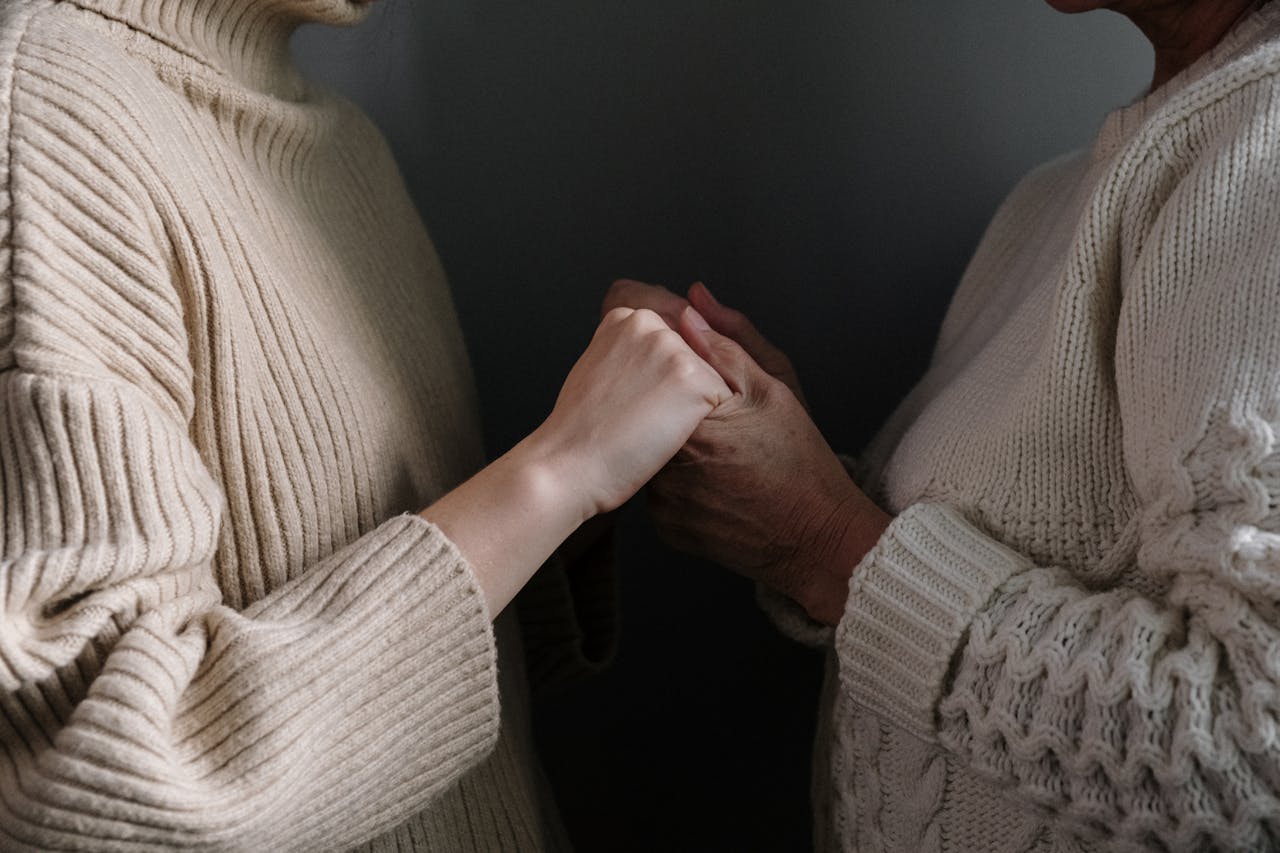
Table of Contents
Understand what attachment styles are and which resonates the most with you.s Explore the dynamics of secure, anxious, and avoidant attachments, shedding light on how they shape your relationships and emotional connections.
Key Takeaway
- Identifies Four Main Styles: Outlines secure, anxious, avoidant, and disorganized attachment styles, each affecting relationship dynamics and emotional responses.
- Rooted in Early Relationships: Traces back to how early interactions with caregivers shape our approach to adult relationships, highlighting the impact of initial bonding experiences.
- Influences on Communication and Intimacy: Affects how individuals communicate, handle conflicts, and their comfort with closeness or independence within relationships.
- Path for Improvement: Offers insights on recognizing one’s attachment style as a foundation for fostering healthier, more fulfilling relationships through self-awareness and change.
Attachment Styles Defined
Have you ever heard of attachment styles? They're the factors that define whether our next relationship (or situationship) is about to be a smashing success or an absolute disaster.
It's all about how we connect with people, tracing back to our earliest days with our caregivers. Think of it like a map that guides us through the tricky world of human connections, showing us why we do what we do in relationships.
There are four main styles: secure, anxious, avoidant, and disorganized. Each adult attachment style comes with its own set of behaviors and expectations in relationships.
So, whether you're the type who texts back in a heartbeat, plays it cool and keeps it casual, or finds the whole relationship thing kind of complicated, understanding these attachment styles can shed some light on your love life.
What Is Attachment Theory?
Attachment theory is a fascinating concept investigating the bond between infants and their primary caregivers and how this initial connection influences adult attachment styles, especially in romantic relationships.
It's like a blueprint for how we handle closeness and deal with the ups and downs in our connections with others.
Developed by psychologist John Bowlby, the theory suggests that the quality of care we receive as infants sets the stage for how we approach relationships later in life, including our romantic relationships.
Suppose we felt safe, and our cries for help were met with warmth and understanding. In that case, we're more likely to develop a secure attachment style or be securely attached, walking into adult relationships with confidence and openness.
On the flip side, if those early interactions were a bit hit or miss, we might lean towards anxious or avoidant attachment styles, where we either cling a bit too tightly or keep our guard up, fearing getting too close.
In the world of dating and romantic relationships, these styles play out in how we text back, handle disagreements, and even in our expectations from our partners.
Understanding attachment theory isn't just about understanding why we act a certain way; it's about unlocking the potential for healthier, more satisfying relationships as adults.
The Four Attachment Styles
Navigating through the complex world of relationships, different attachment styles play a crucial role in shaping how we connect, love, and resolve conflicts.
Here’s a closer look at the four attachment styles that guide our interactions in romantic relationships and beyond:
Secure Attachment Style
If you are securely attached, you're likely to experience balanced and healthy relationships. You're at ease with getting close to others but just as comfortable doing your own thing. Talking things out and managing disagreements calmly and maturely are your strong suits.
You trust your partners and are available to offer support whenever needed, laying the groundwork for a stable and caring connection.
Anxious Preoccupied Attachment Style
If you identify with an anxious attachment style, you might often wrestle with a strong fear of being left behind. You find yourself looking for constant reassurance and validation from your partner to ease your worries.
Being very tuned into your partner's actions and mood swings can cause you to act clingy or overly dependent, all in a bid to secure that feeling of being loved and safe.
Dismissive Avoidant Attachment Style
If you lean towards an avoidant attachment style, you likely hold your independence in high regard, sometimes even putting it before deep relationships. You keep an emotional arm's length, finding it tough to share your inner world, all because intimacy and vulnerability seem pretty daunting.
When things start feeling too close for comfort, your instinct might be to retreat, choose to be on your own, or stick with relationships that don't go much below the surface.
Disorganized Attachment or Anxious-Avoidant Attachment Style
With the disorganized attachment style (also known as a fearful avoidant attachment style), you might find yourself in a whirlwind of mixed feelings, caught between wanting to be close and fearing it simultaneously.
You crave intimacy, yet the thought of getting too close scares you, leading to a rollercoaster of actions that can confuse both you and your partner.
You might swing back and forth, pulling people in one moment and pushing them away the next, as you grapple with finding a consistent way to connect. This tug-of-war inside you makes relationships feel like navigating through a maze without a clear path forward.
Where Attachment Patterns Come From
Attachment patterns, including secure and insecure attachment styles, trace their origins back to our earliest interactions with our primary caregivers and an attachment figure.
The type of care, responsiveness, and emotional availability we receive as infants and young children significantly shape how we approach relationships later in life.
Secure Attachment
Primary caregivers are consistently loving, responsive, and attuned to their child's needs, which fosters a sense of security and trust. This solid foundation leads to developing a secure attachment style, where individuals feel comfortable with intimacy and independence in relationships.
Insecure Attachment Styles
In contrast, when caregivers are inconsistent, overly intrusive, or emotionally unavailable, it can lead to the development of insecure attachment styles. These include:
- Anxious attachment: Here, caregivers might have been unpredictable in their attention and responsiveness, leading to anxiety about relationships and a craving for closeness and reassurance.
- Avoidant attachment: This style often results from caregivers who were distant or dismissive of their child's needs, encouraging premature self-reliance. As adults, individuals might avoid emotional closeness to protect themselves from potential rejection or disappointment.
- Disorganized attachment: Sometimes, when caregivers behave in frightening or traumatizing ways, it can lead to a disorganized approach to relationships, where individuals struggle with a mix of anxious and avoidant behaviors.
How Each Attachment Style Looks
Secure Attachment: Confident and Connected
Adults displaying a secure attachment style thrive in their relationships, seamlessly balancing intimacy with personal autonomy. They are adept at communicating openly, navigating conflicts with understanding, and providing unwavering support to their partners, laying the groundwork for deep and lasting connections.
Anxious Attachment: Seeking Reassurance
Individuals with an anxious attachment style often live with a persistent worry about their relationships. They seek constant validation from their partners to soothe their fears of abandonment.
This may lead to them being perceived as clingy, as they require frequent reassurance of their partner's affection and commitment.
Avoidant Attachment: Hyper-Independent
Those with an avoidant attachment style prize their independence above all, sometimes at the cost of close relationships. They tend to keep their distance, often out of a deep-seated fear of vulnerability and emotional intimacy.
Avoidant individuals might withdraw in times of closeness, favoring solitude or shallow relationships to protect themselves from perceived threats of dependency.
Disorganized Attachment: Torn Between Extremes
Adults with a disorganized (or anxious-avoidant) attachment style exhibit a mix of seeking closeness and pushing it away. Their behavior in relationships can be unpredictable, craving intimacy in one moment and fearing it the next.
This style reflects a struggle to develop a consistent approach to relationships, often due to a history of trauma or neglect from their caregivers.
How to Change Your Attachment Style
"You can't change your unconscious internal models unless you recognize them." Therapist Uncensored Podcast.
Changing your attachment style, especially from an insecure to a more secure one, is a journey that requires self-reflection, patience, and, often, the support of a professional. Here’s how you can embark on this transformative path:
Gain Awareness
The first step is to understand your current attachment style. Reflect on your relationship patterns, emotional reactions, and how you deal with intimacy and independence. Books, articles, and psychological assessments can be helpful tools in gaining this insight.
Seek Help
A therapist, especially one familiar with attachment theory, can provide invaluable guidance. Therapy offers a safe space to explore the roots of your attachment style, understand how it manifests in your relationships, and develop strategies for change.
Practice Mindfulness
Mindfulness helps you become more aware of your thoughts and feelings without judgment. This awareness can be particularly helpful in recognizing and managing the automatic reactions that stem from your attachment style.
Build Healthy Relationships
Seek out and nurture relationships with securely attached individuals. Secure relationships can serve as models and provide experiences that contradict your insecure expectations, teaching you new ways of relating and building trust.
Communicate Openly
Learn to express your needs and feelings healthily. Communication is key in changing attachment patterns, as it helps you navigate conflicts more constructively and deepen intimacy.
Challenge Negative Beliefs
Insecure attachment styles often come with a host of negative beliefs about oneself and others. Actively challenge these beliefs by questioning their validity and reframing your thoughts to be more balanced and compassionate.
Foster Independence and Interdependence
Work on finding a balance between independence and seeking support. Cultivate your own interests and self-reliance while allowing yourself to depend on others, recognizing that both can coexist.
Frequently Asked Questions
What is the most common insecure attachment style?
The most common insecure attachment style is thought to be the anxious attachment style. Research and clinical observations suggest that a significant number of people exhibit the hallmarks of anxious attachment, such as an intense fear of abandonment, a need for constant reassurance from their partners, and a tendency to worry excessively about their relationships.
What is the rarest attachment style?
The rarest attachment style is often considered to be the disorganized (or fearful-avoidant) style. This style is characterized by a lack of a consistent strategy in dealing with attachment figures resulting from frightening or traumatizing caregiving.
Due to their mixed feelings about intimacy and relationships, individuals with this style may exhibit conflicting behaviors, such as seeking closeness and then pushing it away.
Can your attachment style change?
Yes, your attachment style can change over time. While early experiences with caregivers are crucial in shaping our initial attachment patterns, these are not set in stone. You can work towards a more secure attachment style through mindfulness practice or therapy.
References
Attachment in Adults | Wikipedia
Attachment Theory: A Guide to Strengthening the Relationships in Your Life | Thais Gibson
The Body Keeps the Score: Brain, Mind, and Body in the Healing of Trauma | Bessel van der Kolk, M.D.
Hold Me Tight: Seven Conversations for a Lifetime of Love | Dr. Sue Johnson
Disclaimer
The contents of this article are provided for informational purposes only and are not intended to substitute for professional medical advice, diagnosis, or treatment. It is always recommended to consult with a qualified healthcare provider before making any health-related changes or if you have any questions or concerns about your health. Anahana is not liable for any errors, omissions, or consequences that may occur from using the information provided.

By: Anahana
The Anahana team of researchers, writers, topic experts, and computer scientists come together worldwide to create educational and practical wellbeing articles, courses, and technology. Experienced professionals in mental and physical health, meditation, yoga, pilates, and many other fields collaborate to make complex topics easy to understand.
